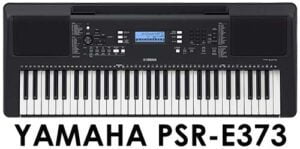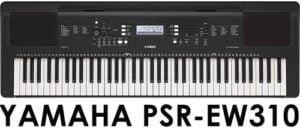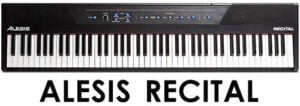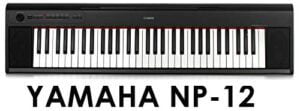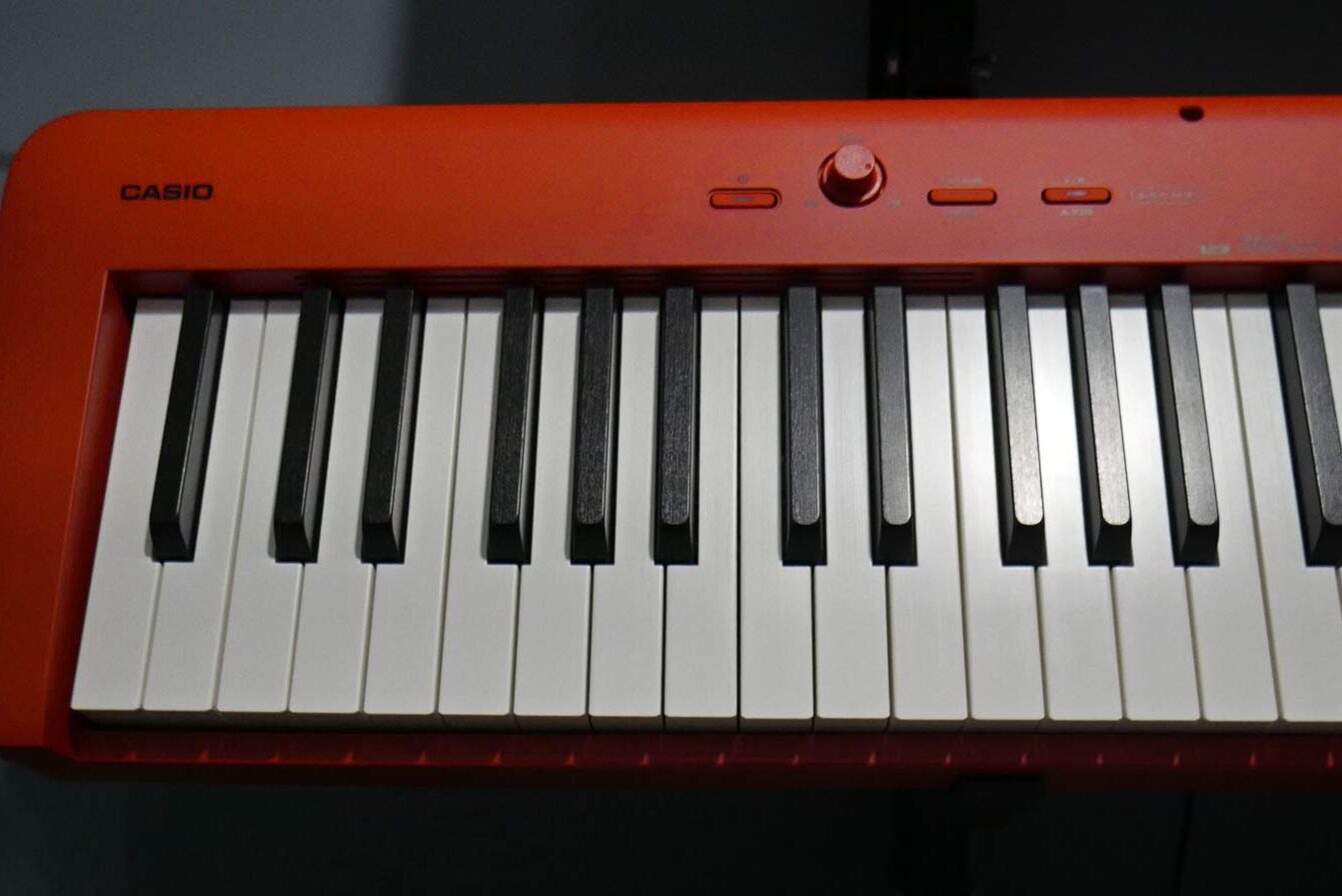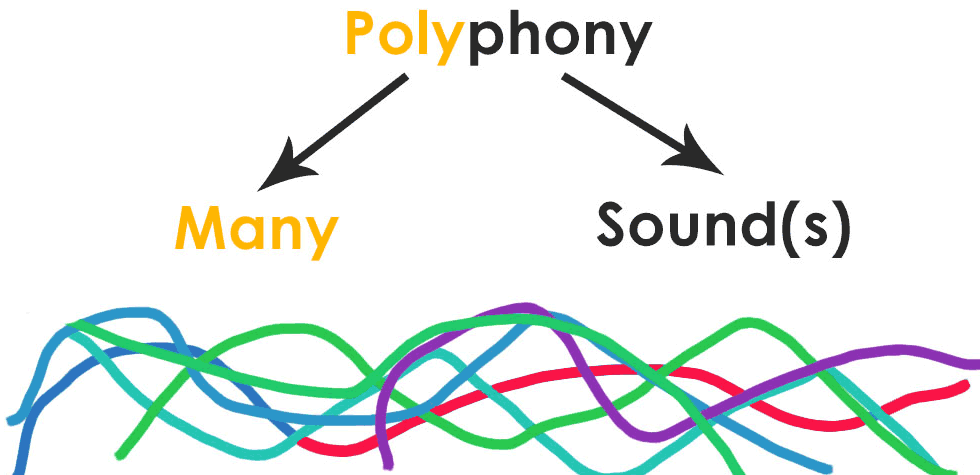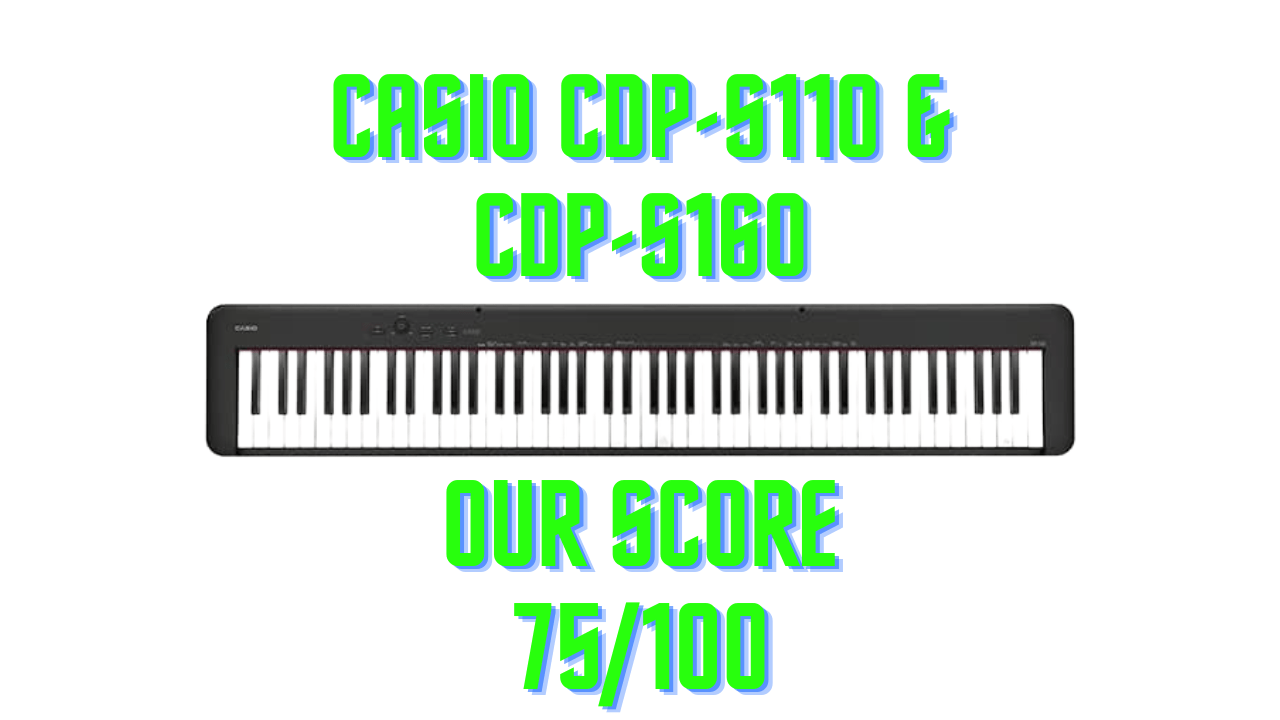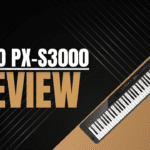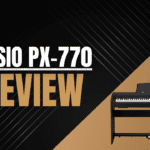Want to open the door to your musical ability? Look no further than the Casio CDP-S110 and CDP-S160! Both digital pianos offer a lot of features. Realistic piano sound, fashion-forward design, and tons of connection options. As a piano player, you know the importance of having an instrument that can bring out the best in your music.
But with so many choices available, narrowing down the right one for you can be hard. If you’re looking for a reliable digital piano to help bring your tunes to life on stage or in studio environments, look no further than Casio’s CDP-S110 and CDP-S160 models.
In this review, I’ll be giving my up close and personal evaluation of both pianos and examining their key features and differences so that you can decide which is better suited for your particular needs. Let’s dive in!
[su_box title=”Casio CDP-S110/CDP-S160 Specs” style=”glass” box_color=”#2b2729″ radius=”2″]
- 88 full-sized, touch-sensitive/weighted scaled hammer action keys
- 10 voices/18 onboard tones
- 200 rhythms
- Built-in stereo speakers and enhanced sound system featuring 2 x 10 watt speakers and Damper Resonance Simulator
- Lesson Mode for learning piano and interface to connect with a computer via USB
- Bluetooth MIDI connectivity with the Smart Pianist app allowing you to access a variety of features from your iOS device such as selecting sounds, adjusting settings, recording performances, or playing along with audio songs.
- Battery or AC adapter power options[/su_box]
Overview
The digital pianos from the Casio CDP-S series offer versatile features and full sound while remaining lightweight and compact. The CDP-S110 is an entry-level model that provides a great place to learn piano basics, while the CDP-S160 is a more advanced option. Both have 88 notes with full-scale Hammer Action Keyboard II, 622 tone tones, 192 polyphony and comprehensive Duet Mode for teachers or duet performance.
In addition, both include easy-to-use Layer and Split functions, as well as a metronome and built in recorder so that you can perfect your timing and composition skills. Whether you’re an experienced player or just starting your journey toward becoming a master of music, the Casio CDP-S series gives you everything you need at an affordable rate.

You can also access electric instrument sounds like strings, organs, and saxophones. Multiple buttons, knobs, wheels, and sliders control different settings. And their multi-dimensional AiR Sound Source ensures amazing sound quality across genres.
Plus, these two models come with an onboard recorder to record up to five tracks at once. And you can use the dedicated app support via iOS/Android devices for recording/playback capabilities and more.
Both models are lightweight and have a weighted keyboard stand. So, they offer great value for money while you enjoy a realistic playing feel.
Design
The Casio CDP-S series is popular for many piano players due to its sleek design and intuitive controls. Its slim, stylish body is constructed from scratch-resistant ABS plastic for lasting attractiveness and durability. The juxtaposition of the traditional black panel and white keys makes this instrument stand out in any environment.
Along with these aesthetic qualities, the CDP-S110 and CDP-S160 keyboards also have great tactile responses thanks to the improved hammer action scales. Aesthetics aside, these modern instruments offer many features, including over three hundred onboard tones and rhythms.
Further, players can adjust parameters such as detune and reverberation to customise their sound further. With everything from genre sounds worldwide to electrical organ tones laid out across neatly arranged control buttons, Casio’s CDP S series owners will surely enjoy their experience working with this user-friendly instrument.

Exterior Design
The Casio CDP-S110 and CDP-S160 upright pianos are made with modern musicians in mind. These pianos have a stylish look: black paneling, silver details around the keys, and an LED touch screen for easy access to functions. They’ll fit in any interior design, from minimalistic to classic.

The quality materials make these instruments strong enough for regular use. The CDP-S110 is 120 cm x 33 cm x 79 cm (w/h/d) and the larger CDP-S160 is 133cm x 38cm x 79cm (w/h/d). Both feature 88 full-sized weighted keys and five octaves. The Responsive Hammer III action gives the player a real feel, with light touch response for more freedom with their music.
The exterior design of the Casio CDP-S110 and CDP-S160 digital pianos offers a modern and elegant look. The slim and sleek design makes these pianos a great addition to any home or studio.
The contemporary styling is complemented by the black, white, or rose gold finishes that enhance the dual 8W amplifiers and provide superior sound projection. With their attractive design, these digital pianos stand out from the rest.
Each model also features an LCD display that shows pertinent information about the piano during operation, providing increased convenience for all users. Whether you are a professional performer, hobbyist, or student, these digital pianos are aesthetically pleasing and will make a great addition to any living setting or performance venue.
Interior Design
The Casio CDP-S110 and CDP-S160 keyboards feature a special internal design. It provides an improved playing experience. The keys are made of ABS Natural Touch material, making it feel like an acoustic piano.
The keys are divided into 3 categories: the ten black keys, the four octaves in the center, and the upper range on both ends. This helps to avoid tripping up while playing complex chords and arpeggios. The damper pedal and added headphone output enhance the sound quality and also help with communication when playing with other musicians or recording.

The keyboard body is protected with rubber guards. It’s thin, making it easier to transport. It has an adjustable stand, so adults and children can optimize their playing angle and posture, just like on a real grand piano. You’ll need an amplifier or music studio speakers to get the right volume while playing or recording music to complete your set-up.
The Casio CDP-S110 and CDP-S160 provide perfect solutions for aspiring musicians. Both models feature a crisp LCD display, stylish woodgrain cabinet design, and contoured edges for reduced fatigue when keyboarding for extended periods.
The piano-style keyboard is ultra-responsive to keystrokes, making dynamic expression possible from the first touch. Players who need more detail can modify the tone, volume and panning on a track-by-track basis without interrupting their performance.
With five sounds on board—Grand Piano 1, Grand Piano 2, E.Piano 1, E.Piano 2 and Harpsichord—the interior design of the CDP-S110 and S160 make it easy to customize digital audio productions while retaining excellent sound quality.
Features
The Casio CDP-S110 and CDP-S160 pianos are equipped with many features – perfect for any musician! They have full-size weighted keys and a built-in metronome – great for unlocking your potential.
Now, let’s explore the features of these amazing pianos:
The CDP-S160 is lightweight and easy to transport so you can take your music with you wherever you go.
– FINE-GRained KEY SURFACE – Prevents slippage caused by perspiration and provides a comfortable playing experience.
– EASY TO USE FUNCTION NOTATIONS – See which keys to press to change settings such as tones and tempo.
– 16 ALTERNATE TEMPERAMENTS – Standard equal temperament tuning plus 16 alternate temperaments for greater versatility.
– DUET MODE – Left and right halves of the keyboard are set to the same tonal range for ensemble playing.
– MIDI RECORDER – Record performances to the piano’s internal memory and play them back.
REVERB AND CHORUS – The Casio CDP-S110 offers 4 reverbs and 4 choruses, letting you create depth and spaciousness with your sounds. You can also layer and split tones, transpose the pitch, tune the keyboard, and use the metronome for practice.
– KEYBOARD TUNING – The tuning control onboard the CDP-S110 allows you to match the keyboard’s pitch to other instruments or a fixed pitch, making it easy to stay in tune. The keyboard has a range of A4 = 415.5 Hz ~ 440.0 Hz ~ 465.9 Hz so that you can find the perfect sound for your music.
– EASY PLAYABILITY – With its touch-sensitive keys, the Casio CDP-S110 makes it easy to play expressively and achieve greater dynamics in your performances.
Keyboard and Action
The Casio CDP-S160 and CDP-S110 have standard 88-key keyboards with full-size keys. These keys are weighted like those of an acoustic piano, making the playing experience as close to real as possible. This allows you to learn to play with a powerful, authentic sense of touch.

The action on both keyboards is smooth and responsive. Making it easy to transition between gospel, country, classical, jazz, and pop genres. You can also switch from electric instruments to acoustic instruments quickly and easily.
Both keyboards also offer effects such as reverb and chorus. Three types of reverb (room, club, and hall) can be applied in real-time to accompaniment or individual voices. The chorus effect creates a classic 12-string guitar sound for extra depth and texture without changing keyboard settings.
Sound Quality
Regarding sound quality, the Casio CDP-S110 and CDP-S160 are keyboards that stand out from the crowd. Both digital pianos use Casio’s proprietary ‘Multi-Dimensional Morphing AiR’ sound source technology, resulting in a remarkably realistic piano acoustic sound with warm sustain and plenty of body.
The ‘Linear Morphing System,’ meanwhile, ensures an even response across all 88 keys. Additionally, both models feature an impressively rich selection of instrument tones of varying sounds, ranging from grand piano tonality to organ jazz.
Together, these features make for an immersive playing experience that captivates no matter your skill level.

Casio’s CDP-S110 and CDP-S160 digital pianos make a sound that can’t be beaten for their price range. These instruments have tesselated sampling technology, which creates a realistic reaction to your keystrokes.
Both models’ triple sensor key reaction system is very responsive, so pianists have a natural feel. Furthermore, every key has two velocity levels – so your touch or expression will lead to a distinct response.
The CDP-S110 and CDP-S160 have an onboard library of sounds, such as grand piano, electric piano, organ and strings. You can also make your instruments by altering the reverb levels and effects like a chorus. The interface panel makes it simple to modify the pitch with transposition functions. The speakers provide great sound, with enough projection power to fill any room. You can plug in external headphones when you don’t want to disturb those around you.
- You Might Also Like: The Ultimate Guide to Choosing the Best Headphones
Polyphony

[su_spoiler title=”What is Polyphony?” style=”modern-light”]
Polyphony in digital pianos refers to the number of notes that can be played simultaneously. Most contemporary digital pianos come equipped with 64, 128, 192, or 256-note polyphony.
One might wonder how it’s possible to have so many notes playing at once when there are only 88 keys on the piano. Firstly, many modern digital pianos use stereo samples, requiring two or more notes for each key played.
Additionally, using the sustain pedal, sound effects such as Reverb and Chorus, dual-mode layering, and even the metronome ticking sound require additional notes of polyphony.
When the sustain pedal is depressed, the earliest played notes continue to sound while new notes are added, requiring the piano to store more memory to keep all the notes sounding.
Playing with a song playback or auto-accompaniment also requires polyphony for the notes and backing track.
When the polyphony limit is reached, the piano drops the earliest played notes to free up memory for new notes, which can affect the quality and fullness of the sound.
Although one may not always need all 192 or 256 voices of polyphony at once, there are instances when 64 or even 128-note limits can be reached, especially when layering multiple sounds or creating multi-track recordings.
Having at least 64 notes of polyphony is desirable for digital pianos.
[/su_spoiler]
The clear and crisp sound of the polyphony of Casio CDP-S110 and CDP-S160 digital pianos are one of their strongest features. These pianos are perfect if you’re looking for weighted keys but don’t want to break the bank.
The polyphony of both models equals 64 notes, allowing each note to sing out in fullness and clarity or combine in glorious harmony. Whether you’re playing classical tunes or modern beats, it will all come through with stunning clarity on either model. Both pianos are truly a pleasure to play thanks to their rich layers of sound and user-friendly design.
Sound
The CDP-S160 is equipped with a pair of 8W stereo back-firing speakers, which are surprisingly powerful for its price bracket. While wattage isn’t necessarily a surefire indication of sound quality, this digital piano’s modest output performs quite impressively compared to similar models.

The Casio CDP-S160 boasts impressive audio output. You can expect a clear sound without distortion even when cranked up to high volumes. Kudos goes out the engineering team at Casio for this quality set of speakers! However, if your goal is using it in an auditorium or larger venue setting, be sure to get yourself some extra amplification firepower so everyone will have no problem hearing every crisp note being played.
Connectivity
The CDP-S160 offers the basic connectivity features for connecting to other devices. There’s a USB Type B port for use as a MIDI controller with smart devices or laptops, but it only works over USB MIDI and requires an external audio interface if you wish to access its built-in sounds within your Digital Audio Workstation (DAW).

The CDP-S160 piano offers unprecedented customizability with its damper pedal jack and compatible SP-3 sustain pedal. You can also swap this out for a variety of other generic pedals, including the specialty SP-34 triple setup that mimics acoustic pianos in its use of soft, sostenuto and regular damper functions – however note that these features are not available on the CDP S110 model.
Casio CDP-S110 and CDP-S160 both come with MIDI, Bluetooth and Aux outputs. MIDI connects you to musical devices like synthesizers, drum machines, and keyboards. You can use it to link up with music production software, such as Apple’s Logic Pro or Ableton Live.

Bluetooth lets you stream songs and rhythms from your phone or laptop. This is great for practice or when jamming with friends. The Aux output lets you add extra speakers or sound systems for bigger groups.
These modern features offer something for all players – novices and pros. They also have traditional audio connectors like headphones, line outputs (right/left) and sustain pedal input adapter jack (for optional pedals).
Performance
Casio CDP-S110 and CDP-S160 are remarkable for performance. They have 25 built-in sounds and 64-note polyphony. There are also versatile accompaniment settings for piano potential. Let’s explore how these features can help you maximize your performance.
Playability
The Casio digital pianos, CDP-S110 and CDP-S160, are both premium models. They offer an impressive range of sounds and features, such as Casio’s renowned AiR sound engine, plus an 88-note scaled hammer action II keyboard. There’s also a dual 8W + 8W stereo amplifier to boost your sound.
Playability is key for pianists. Both Casio models have great playability – trills, legato playing, glissandos, and melodic passages. Plus, Ivory keys with simulated ebony/ivory finishing give players a comfortable yet solid feel. The touch response is also excellent across all dynamic ranges, giving experienced players control over their performance.
Recording and Playback
The Casio CDP-S110 is great for musicians who want to practice, compose, and arrange, as it has recording and playback functions. It has 10 demo songs and 10 user-recorded songs, with the ability to adjust tempo.
The CDP-S160 takes it up a notch with 20 pre-programmed and 20 user-recorded songs and a “Slow Down” feature to adjust tempo without changing pitch. Both models offer direct USB flash drive connectivity so that recordings can be saved quickly and easily.
Pros and Cons
Casio CDP-S110 and CDP-S160 are two popular digital piano models. They’re dependable, tough and offer good value. Each model has its own advantages and disadvantages. Let’s take a look. Then you can decide which one fits you best.
Pros
The Casio CDP-S110 and CDP-S160 offer lots of perks for newbies and intermediates. With a bright, clear sound, the S110 and S160 both have 88-key full-length weighted keyboards. This makes them perfect for learning piano technique.
The key action is also genuine, making the learning experience more realistic. They include practice tools like record/playback, multiple channels, tone control and over 700 instrument voices. This includes acoustic grand piano sounds, good for home studio production.
These pianos are slim and powerful, so they’ll fit anywhere in your home. You can use their built-in speakers or your external speakers. The USB To Host port lets you connect to a computer via MIDI. That way, you can record song ideas or play along with digital accompaniment tracks.
Overall, these two pianos have everything beginners need to get into music-making!
Cons
The Casio CDP-S110 and CDP-S160 have a lot for a beginner or intermediate piano player. But there are cons:
- They are light, but this could mean they don’t feel as realistic or comfortable to play.
- The sound quality is not great – poor bass response and easy to overdrive. Plus, only two speakers instead of four or more.
So, the Casio models have pros and cons. Think carefully if either is right for you.
Conclusion

To wrap up, the Casio CDP-S110 and the CDP-S160 deliver great digital piano sound and feel. They have lots of instrument sounds and features to motivate many music styles. The CDP-S160 has more sounds and connection options, making it more suitable for advanced players. Both models have plenty of digital piano tones to play any music. They both offer a great choice for learners and experienced artists alike, as they can explore the many possibilities these Casio digital pianos offer.
The Casio CDP-S160 may look like a powerful instrument, but its performance falls short compared to modern models like the CDP-S360. While it does offer decent tones and weighted keys in an impressively portable package – thanks to savvy engineering by Casio – these features are outstripped by other options available on the market. Those looking for quality sound without breaking their budget will find that six of its ten preloaded presets provide radio-ready beats with some power behind them.
The CDP-S160, Casio’s latest digital piano offering, retains its predecessor’s low polyphony count but lacks Bluetooth connectivity and alternative control schemes for those more traditional players who prefer onboard controls and auxiliary inputs to apps or button/key combinations like the CDP-S360 model offers a much simpler plugging experience with no need of an adapter. Unfortunately, audio playback isn’t easily achievable through the speakers for smartphone users without headphone jacks on the go.
For those looking to upgrade the original CDP-S160, its successor—the CDP-S360—is worth exploring. It offers an improved experience in every way and comes at a surprisingly low price point of $100 more than that of the S160.
In comparison, though, Casio’s other ‘S’ series instruments offer far better features with no real change from what was released 3 years ago for these two models.
Frequently Asked Questions
Q1: What is the difference between the Casio CDP-S110 and the CDP-S160?
A1: The main difference between the Casio CDP-S110 and CDP-S160 is that the CDP-S160 has a heavier action than the CDP-S110. The CDP-S110 has a light-touch keyboard that is great for beginners, while the CDP-S160 has a more-weighted keyboard better suited for experienced players.
Q2: What type of sounds do the Casio CDP-S110 and CDP-S160 offer?
A2: The Casio CDP-S110 and CDP-S160 both offer a variety of sounds including grand piano, electric piano, strings, and organs.
Q3: What are some of the features of the Casio CDP-S110 and CDP-S160?
A3: The Casio CDP-S110 and CDP-S160 include a built-in metronome, MIDI connections, and a headphone jack. They also both offer 50 built-in songs for users to practice playing with.





